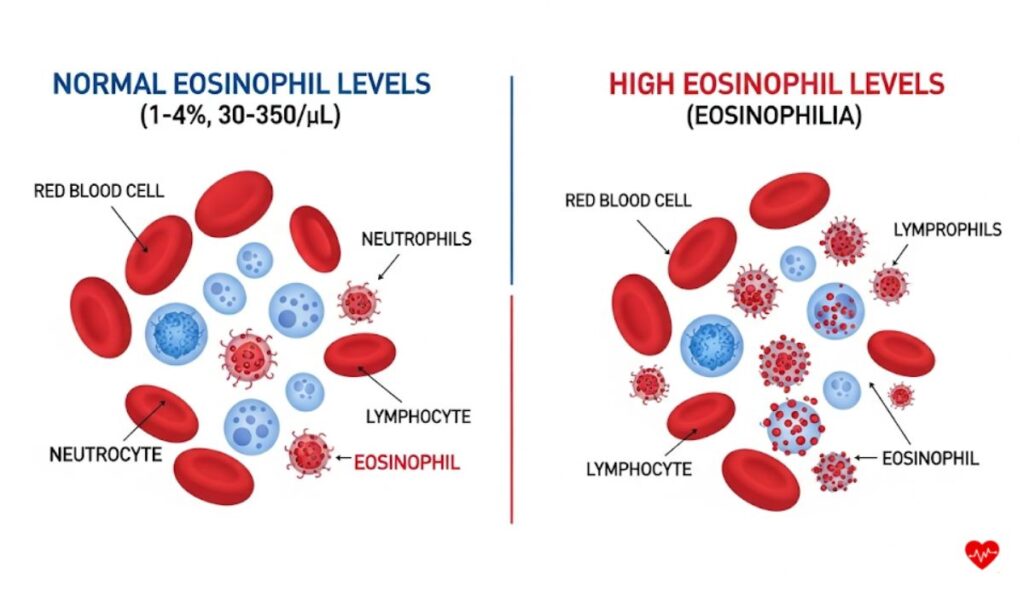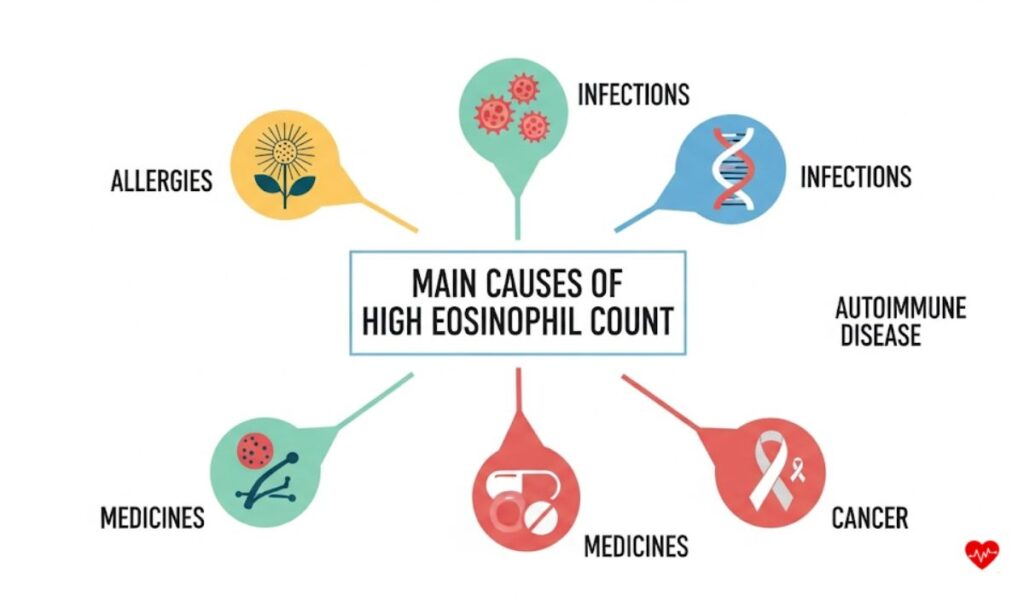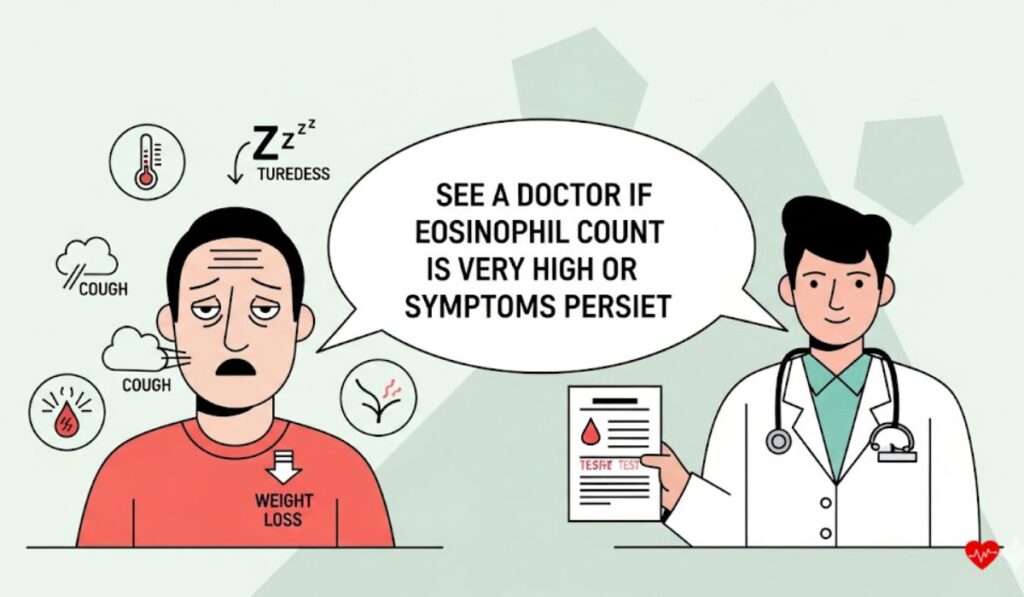Table of Contents
When you go for a blood test, you may see a section called eosinophils. Many people get worried if the number is high or low. Some even ask: Does a high eosinophil level mean cancer?

The short answer is: Not always. Eosinophils can rise for many other reasons, and cancer is only one of them. Let’s understand this in simple words.
What Are Eosinophils?
Eosinophils are a type of white blood cell. They are part of your immune system. Their main job is to:
- Fight infections (especially caused by parasites).
- Control allergies like asthma or hay fever.
- Help your body heal from swelling and inflammation.
So, having eosinophils is normal and healthy. The problem starts only if the count becomes too high or too low.
Normal Range of Eosinophils
Doctors usually measure eosinophils in two ways:
- Percentage of total white blood cells: Normal is 1% to 4%.
- Absolute count (cells per microliter of blood): Normal is 30 to 350.
If your report shows a small increase, don’t panic. It could be temporary and caused by common things like allergies.

What Causes High Eosinophils?
High eosinophil count is called eosinophilia. It can happen due to:
- Allergies – asthma, eczema, hay fever.
- Infections – especially by worms or parasites.
- Autoimmune diseases – when the body attacks itself.
- Medicines – some drugs can raise levels.
- Inflammation – long-term swelling in the body.
So, in most cases, it’s not cancer.

Can High Eosinophils Mean Cancer?
Sometimes, eosinophils increase when certain cancers are present, such as:
- Blood cancers – like leukemia or lymphoma.
- Cancers that spread to bone marrow.
- Some tumors – such as lung or stomach cancer.
But here’s the key point:
👉 Eosinophils alone cannot diagnose cancer.
Doctors use eosinophil counts only as a clue, not a final answer. To confirm cancer, they also need:
- Scans (like CT or MRI).
- Biopsy tests.
- Other blood tests.
What Level of Eosinophils Should Worry You?
There is no single “cancer level.” But doctors may get concerned if:
- The absolute eosinophil count is above 1,500 for many months.
- It keeps rising without any allergy or infection.
- It comes with other warning signs like weight loss, night sweats, fever, or swollen lymph nodes.
If this happens, your doctor may suggest more tests to check the reason.
When to See a Doctor
See a doctor if you notice:
- Very high eosinophil counts in repeated tests.
- Long-lasting cough, fever, or tiredness.
- Unexplained weight loss.
- Skin rashes or breathing trouble.
Only a medical expert can tell you the real cause. Don’t try to self-diagnose using lab reports.

How Doctors Treat High Eosinophils
Treatment depends on the cause:
- Allergies → anti-allergy medicines.
- Infections → antibiotics or anti-parasitic drugs.
- Autoimmune problems → steroids or immune medicines.
- Cancer (if present) → chemotherapy, radiation, or surgery.
So, the treatment is never “one size fits all.” The key is finding the root cause.
Key Takeaways
- Eosinophils are white blood cells that protect your body.
- Normal range: 30–350 cells per microliter or 1%–4% of white blood cells.
- High eosinophils are usually due to allergies, infections, or inflammation.
- In rare cases, they may be linked to cancer.
- No eosinophil number alone confirms cancer. More tests are always needed.
Final Word
High eosinophil levels can sound scary, but they are not always a sign of cancer. Many simple and common reasons can cause the rise. If your test shows high eosinophils, don’t panic. Talk to your doctor, share your symptoms, and follow up with the right tests.
Your health is more than just one number on a report. Stay calm, ask questions, and trust medical advice.


